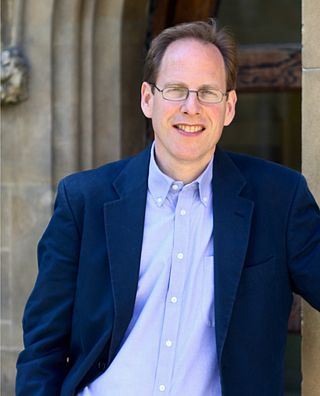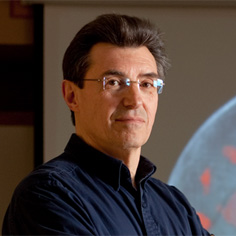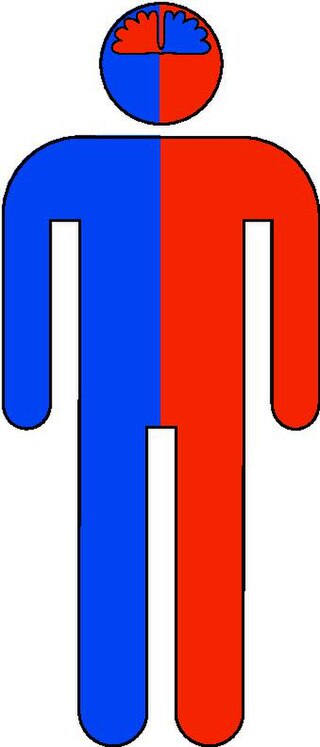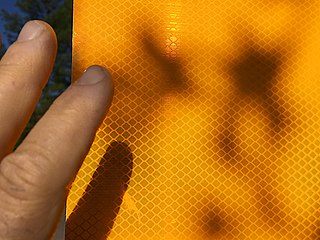Related Research Articles

Asperger syndrome (AS), also known as Asperger's syndrome or Asperger's, formerly described as a neurodevelopmental disorder characterized by significant difficulties in social interaction and nonverbal communication, along with restricted, repetitive patterns of behavior and interests. Asperger syndrome has been merged with other disorders into autism spectrum disorder (ASD) and is no longer considered a stand-alone diagnosis. It was considered milder than other diagnoses which were merged into ASD due to relatively unimpaired spoken language and intelligence.

Somatization disorder was a mental and behavioral disorder characterized by recurring, multiple, and current, clinically significant complaints about somatic symptoms. It was recognized in the DSM-IV-TR classification system, but in the latest version DSM-5, it was combined with undifferentiated somatoform disorder to become somatic symptom disorder, a diagnosis which no longer requires a specific number of somatic symptoms. ICD-10, the latest version of the International Statistical Classification of Diseases and Related Health Problems, still includes somatization syndrome.
In psychology, theory of mind refers to the capacity to understand other people by ascribing mental states to them. A theory of mind includes the knowledge that others' beliefs, desires, intentions, emotions, and thoughts may be different from one's own. Possessing a functional theory of mind is crucial for success in everyday human social interactions. People utilize a theory of mind when analyzing, judging, and inferring others' behaviors. The discovery and development of theory of mind primarily came from studies done with animals and infants. Factors including drug and alcohol consumption, language development, cognitive delays, age, and culture can affect a person's capacity to display theory of mind. Having a theory of mind is similar to but not identical with having the capacity for empathy or sympathy.

Split-brain or callosal syndrome is a type of disconnection syndrome when the corpus callosum connecting the two hemispheres of the brain is severed to some degree. It is an association of symptoms produced by disruption of, or interference with, the connection between the hemispheres of the brain. The surgical operation to produce this condition involves transection of the corpus callosum, and is usually a last resort to treat refractory epilepsy. Initially, partial callosotomies are performed; if this operation does not succeed, a complete callosotomy is performed to mitigate the risk of accidental physical injury by reducing the severity and violence of epileptic seizures. Before using callosotomies, epilepsy is instead treated through pharmaceutical means. After surgery, neuropsychological assessments are often performed.
Developmental disorders comprise a group of psychiatric conditions originating in childhood that involve serious impairment in different areas. There are several ways of using this term. The most narrow concept is used in the category "Specific Disorders of Psychological Development" in the ICD-10. These disorders comprise developmental language disorder, learning disorders, motor disorders, and autism spectrum disorders. In broader definitions ADHD is included, and the term used is neurodevelopmental disorders. Yet others include antisocial behavior and schizophrenia that begins in childhood and continues through life. However, these two latter conditions are not as stable as the other developmental disorders, and there is not the same evidence of a shared genetic liability.
Anosognosia is a condition in which a person with a disability is cognitively unaware of having it due to an underlying physical condition. Anosognosia results from physiological damage to brain structures, typically to the parietal lobe or a diffuse lesion on the fronto-temporal-parietal area in the right hemisphere, and is thus a neuropsychiatric disorder. A deficit of self-awareness, the term was first coined by the neurologist Joseph Babinski in 1914, in order to describe the unawareness of hemiplegia.

Sir Simon Philip Baron-Cohen is a British clinical psychologist and professor of developmental psychopathology at the University of Cambridge. He is the director of the university's Autism Research Centre and a Fellow of Trinity College.
The following outline is provided as an overview of and topical guide to autism:
The empathising–systemising (E–S) theory is a theory on the psychological basis of autism and male–female neurological differences originally put forward by English clinical psychologist Simon Baron-Cohen. It classifies individuals based on abilities in empathic thinking (E) and systematic thinking (S). It measures skills using an Empathy Quotient (EQ) and Systemising Quotient (SQ) and attempts to explain the social and communication symptoms in autism spectrum disorders as deficits and delays in empathy combined with intact or superior systemising.

Behavioral neurology is a subspecialty of neurology that studies the impact of neurological damage and disease upon behavior, memory, and cognition, and the treatment thereof. Two fields associated with behavioral neurology are neuropsychiatry and neuropsychology. In the United States, 'Behavioral Neurology & Neuropsychiatry' has been recognized as a single subspecialty by the United Council for Neurologic Subspecialties (UCNS) since 2004.
Within the study of human behavior, the Low Arousal Approach was developed by Professor Andrew McDonnell in the 1990s, and is now an internationally recognized model of behavior support. A low arousal approach to managing behavior of concern or challenging behavior focuses on stress and well-being, as well as how care givers respond in moments of crisis. Arousal refers to physiological arousal in response to stress, as opposed to sexual arousal. A low arousal approach to supporting individuals with additional needs aims to avoid confrontational situations and instead walk the path of least resistance.

Marcel Just is D. O. Hebb Professor of Psychology at Carnegie Mellon University. His research uses brain imaging (fMRI) in high-level cognitive tasks to study the neuroarchitecture of cognition. Just's areas of expertise include psycholinguistics, object recognition, and autism, with particular attention to cognitive and neural substrates. Just directs the Center for Cognitive Brain Imaging and is a member of the Center for the Neural Basis of Cognition at CMU.
In psychology and neuroscience, executive dysfunction, or executive function deficit, is a disruption to the efficacy of the executive functions, which is a group of cognitive processes that regulate, control, and manage other cognitive processes. Executive dysfunction can refer to both neurocognitive deficits and behavioural symptoms. It is implicated in numerous psychopathologies and mental disorders, as well as short-term and long-term changes in non-clinical executive control. Executive dysfunction is the mechanism underlying ADHD Paralysis, and in a broader context, it can encompass other cognitive difficulties like planning, organizing, initiating tasks and regulating emotions. It is a core characteristic of ADHD and can elucidate numerous other recognized symptoms.

Classic autism, also known as childhood autism, autistic disorder, (early) infantile autism, infantile psychosis, Kanner's autism, Kanner's syndrome, or (formerly) just autism, is a neurodevelopmental condition first described by Leo Kanner in 1943. It is characterized by atypical and impaired development in social interaction and communication as well as restricted, repetitive behaviors, activities, and interests. These symptoms first appear in early childhood and persist throughout life.
Autism, formally called autism spectrum disorder (ASD) or autism spectrum condition (ASC), is a neurodevelopmental disorder marked by deficits in reciprocal social communication, and the presence of restricted and repetitive patterns of behavior. Other common signs include difficulties with social interaction, verbal and nonverbal communication, perseverative interests, stereotypic body movements (stimming), rigid routines, and hyper- or hyporeactivity to sensory input. Autism is clinically regarded as a spectrum disorder, meaning that it can manifest very differently in each person. For example, some are nonspeaking, while others have proficient spoken language. Because of this, there is wide variation in the support needs of people across the autism spectrum.

The imprinted brain hypothesis is an unsubstantiated hypothesis in evolutionary psychology regarding the causes of autism spectrum and schizophrenia spectrum disorders, first presented by Bernard Crespi and Christopher Badcock in 2008. It claims that certain autistic and schizotypal traits are opposites, and that this implies the etiology of the two conditions must be at odds.

Francesca Gabrielle Elizabeth Happé is Professor of Cognitive Neuroscience and Director of the MRC Social, Genetic and Developmental Psychiatry Centre at the Institute of Psychiatry, Psychology and Neuroscience, King's College London. Her research concerns autism spectrum conditions, specifically the understanding social cognitive processes in these conditions.
Dual consciousness is a hypothesis or concept in neuroscience. It is proposed that it is possible that a person may develop two separate conscious entities within their one brain after undergoing a corpus callosotomy. The idea first began circulating in the neuroscience community after some split-brain patients exhibited alien hand syndrome (AHS), which led some scientists to believe that there must be two separate consciousnesses within the brain's left and right hemispheres in competition with one another once the corpus callosum is severed.

The contralateral organization of the forebrain is the property that the hemispheres of the cerebrum and the thalamus represent mainly the contralateral side of the body. Consequently, the left side of the forebrain mostly represents the right side of the body, and the right side of the brain primarily represents the left side of the body. The contralateral organization involves both executive and sensory functions. The contralateral organization is only present in vertebrates.

Achiria, also referred to as "Simple Allochiria", is a neurological disorder in which a patient is unable to recognise or perceive one side of their body. It is oftentimes associated with dyschiria, also known as a form of unilateral neglect or hemispatial neglect. The term achiria is seldom used in modern scientific literature.
References
- ↑ Liederman, Jacqueline. "Marcel Kinsbourne". Encyclopedia of the History of the Psychological Theories. Springer Science+Business Media . Retrieved 14 October 2013.
- ↑ Blakeslee, Sandra (1999, January 19). New Theories of Depression Focus on Brain's Two Sides. New York Times p. F2
- ↑ "Center for Cognitive Studies: Faculty & Staff". Archived from the original on 23 June 2018. Retrieved 6 July 2018.
- 1 2 "Kinsbourne, Marcel". New School. Archived from the original on 2 June 2013. Retrieved 6 July 2018.
- ↑ "Marcel Kinsbourne | New School for Social Research - Academia.edu". nssr.academia.edu. Retrieved 2020-03-30.
- ↑ "Marcel Kinsbourne - Publications". neurotree.org. Retrieved 2020-03-30.
- ↑ Archived July 4, 2008, at the Wayback Machine
- ↑ Liederman, Jacqueline. "Marcel Kinsbourne". Encyclopedia of the History of the Psychological Theories. Springer Science+Business Media. Retrieved 14 October 2013. Blakeslee, S. (1999, January 19). New Theories of Depression Focus on Brain's Two Sides. New York Times "Marcel Kinsbourne - Professor of Psychology". Newschool.edu. Retrieved 2013-09-30. "Marcel Kinsbourne - Dana Foundation". Dana.org. Retrieved 2013-09-30. [1][ dead link ] "Marcel Kinsbourne - Professor of Psychology". Newschool.edu. Retrieved 2013-09-30. "University of Toronto Libraries" (PDF). https://journals.scholarsportal.info/. Retrieved 2013-09-30. Marcel Kinsbourne Daedalus (Spring 1998). "Unity and Diversity in the Human Brain: Evidence from Injury". pp. 233–256. Awareness of Deficit After Brain Injury: Clinical and Theoretical Issues Kinsbourne, Marcel. The American Journal of Psychiatry150. 11 (November 1993): pp.1740-1741 "Marcel Kinsbourne - *Professor of Psychology". Newschool.edu. Retrieved 2013-09-30.